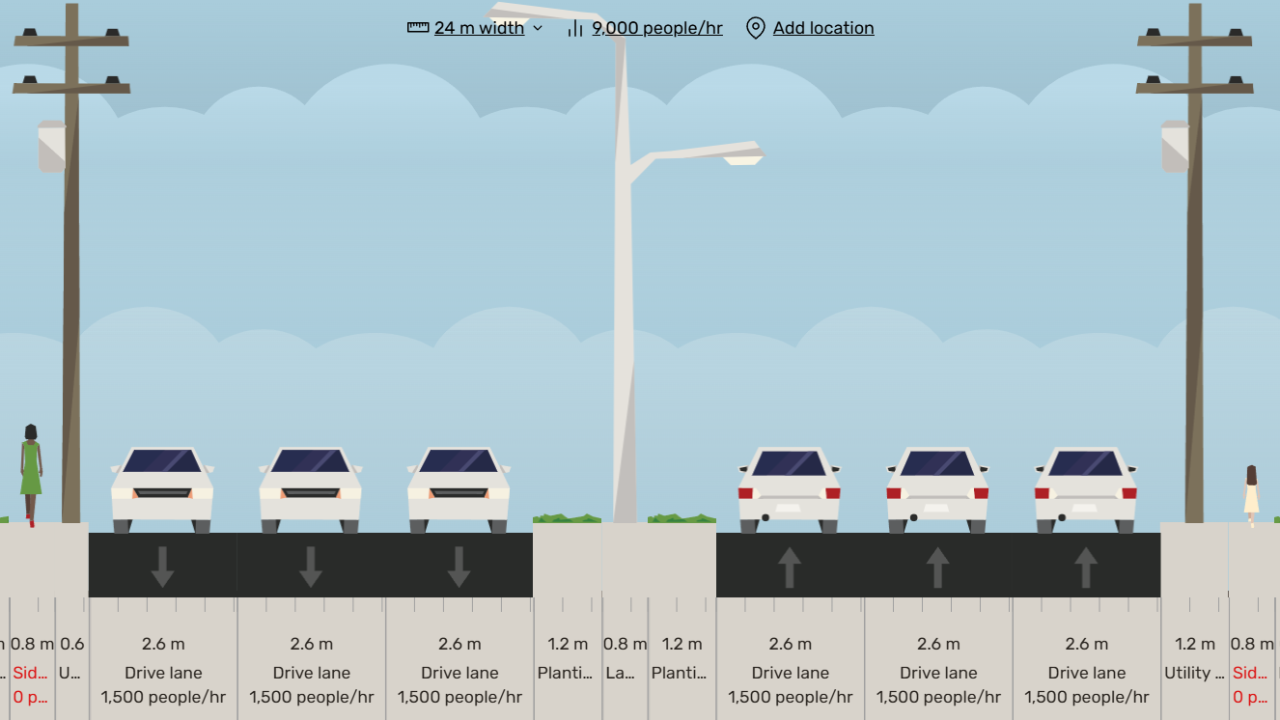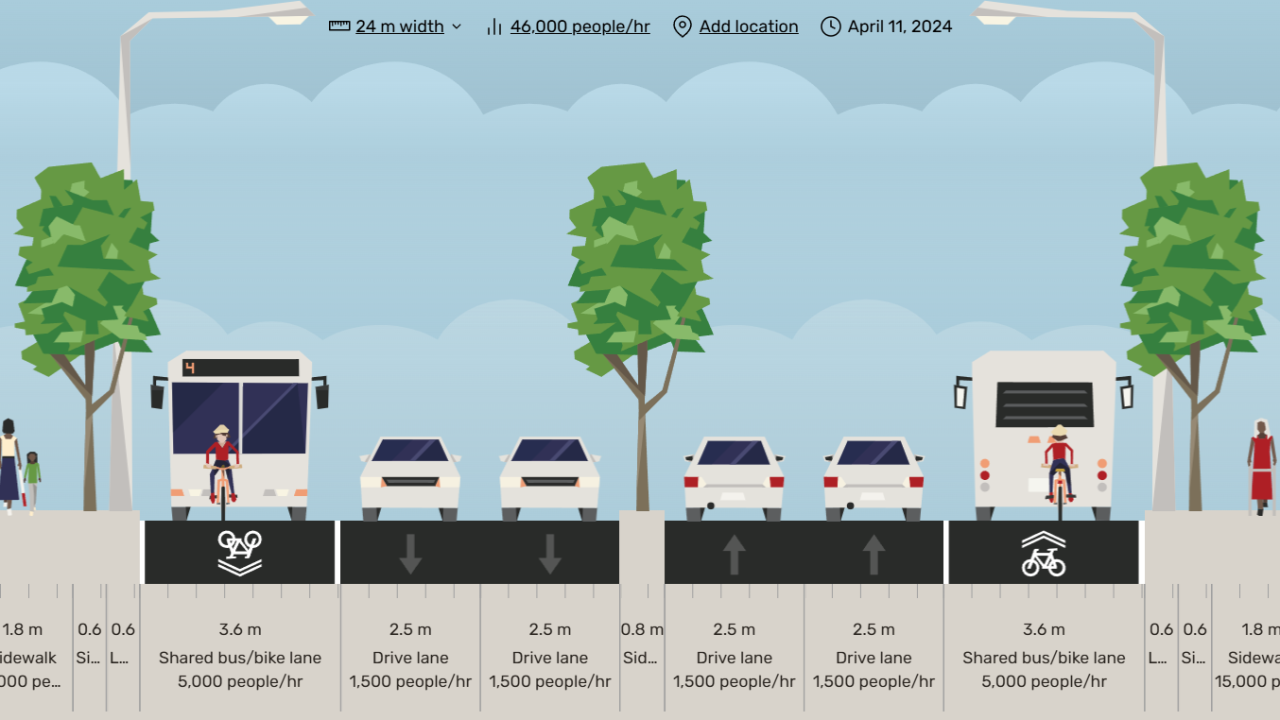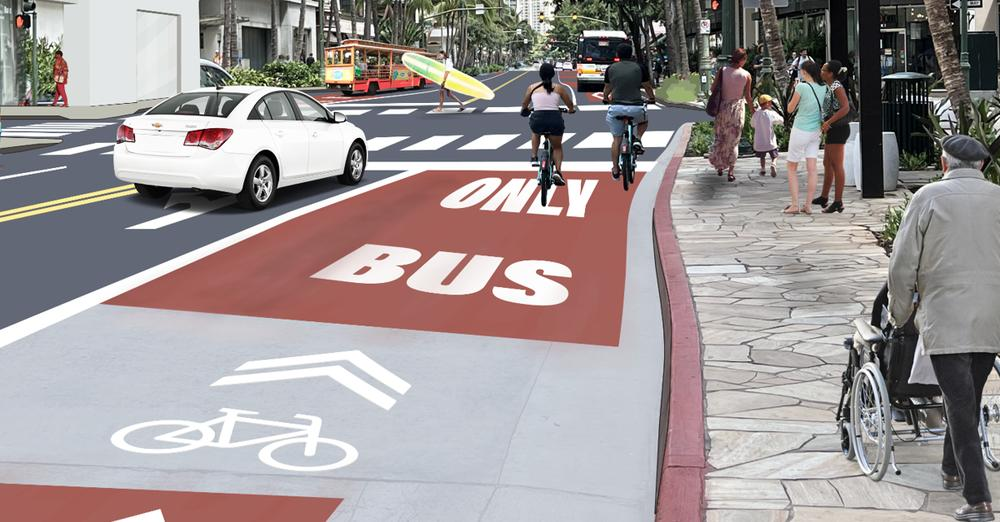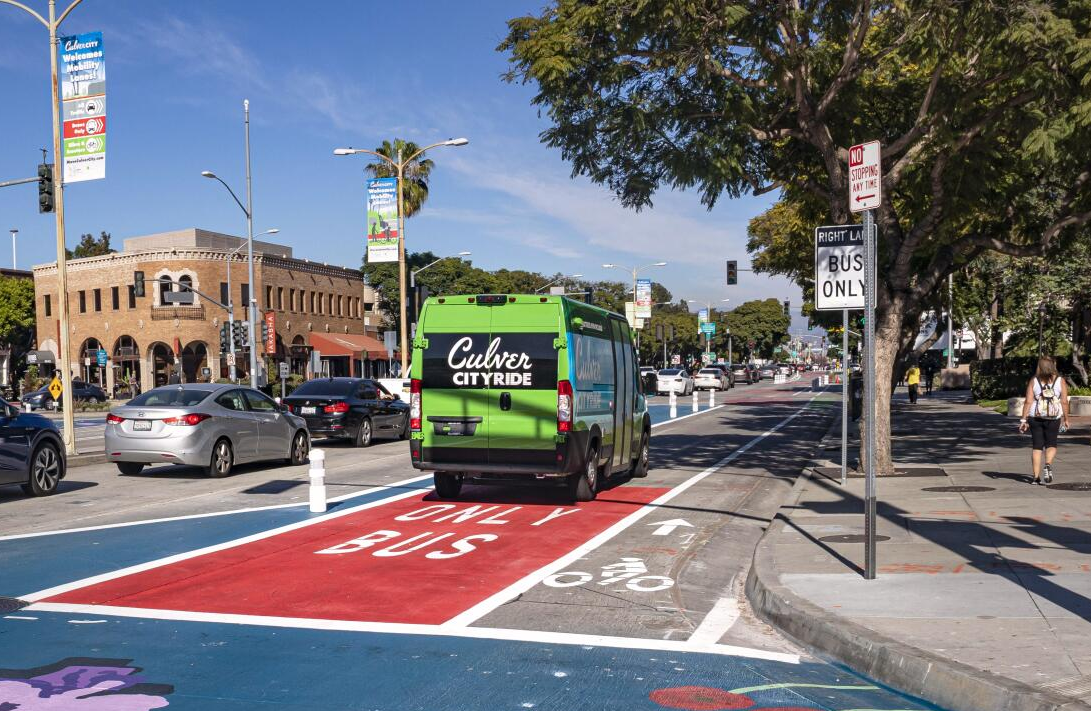Shared bike/bus lane
Most suburban roads are built like this:

It would benefit everyone (including motorists) if we were to build a transportation network which accommodates more than one mode of transportation. With the roads already found in most suburbs, we could have this!

There are many differences between the two designs, but for now, we’ll focus primarily on the shared bike/bus lane, which is essentially a combination of a protected bikeway and a dedicated bus lane, both of which are several times more efficient than a car lane.
A dedicated bus lane can move many more people per hour than a car lane. However, without their own lane, buses get stuck in traffic like everything else. As a result, there’s little incentive for any given individual to take a bus, because on an individual level, buses are slower than cars. The result is a version of the prisoner’s dilemma. A dedicated bus lane eliminates the problem and provides a reason to ride the bus: No traffic!
When buses aren’t present (most of the time), this lane could also be used as a bike lane. When a bus approaches a bike from the rear, the bus would ring a trolley bell (or play a chime sound, or something similar), and bikes are required to move onto the sidewalk to let the bus pass, much the same way cars are required to pull over for emergency vehicles. In order to make this easy, the bike/bus lane would be adjacent to a sidewalk, separated by a smooth curb.

In order to distinguish the bike/bus lane from car lanes, it should be painted another color, and it should also be separated by a rumble strip. That way, it’s obviously marked as a place cars aren’t supposed to be, but if necessary, it’s still possible to cross the line. This situation could come up when a bike needs to make a left turn, or in emergency situations or lane closures, traffic could be temporarily routed into the bike/bus lane for a short distance. Cars could also pull into the bike/bus lane to let emergency vehicles pass.
Most cities already have a code requiring a buffer space between roadways and structures. The bike/bus lane effectively serves as the buffer between cars and buildings while actually getting used for something!
Many suburban arterial roads already have three lanes. The rightmost lane could easily be converted into a bike/bus lane with a coat of paint and some reflective pavement markers. In addition, almost every American city already has a fleet of yellow buses. A comprehensive bike/bus network could be built within a year at a relatively low cost.

As an alternative to a shared bike/bus lane, why not both? A bike lane could be placed to the right of every bus lane, providing cyclists further protection from traffic and eliminating conflicts between buses and bikes. However, this would require the widening of roads, which would come at greater cost, and in some cases, the space for both lanes may simply not exist.
Not only does a bike/bus lane provide residents with more choice in transportation, it encourages the use of these alternative choices. People will want to take the bus if it means no traffic and a shorter commute time, and more people will choose to ride a bike when there’s a safe place to do so.
And of course, providing alternatives to driving removes cars from the road, which comes with a long list of benefits, even for people who exclusively travel by car:
-
Faster commute times
-
Less traffic
-
Less parking needs
-
Quieter neighborhoods
-
Cleaner air
-
Public health
-
More choices when it comes to transportation
-
Save money on gas/insurance/car ownership
-
Lower road maintenance costs
-
Mobility for people who can’t drive (1 in 3 Americans, including kids and seniors)
-
Fewer car accidents
